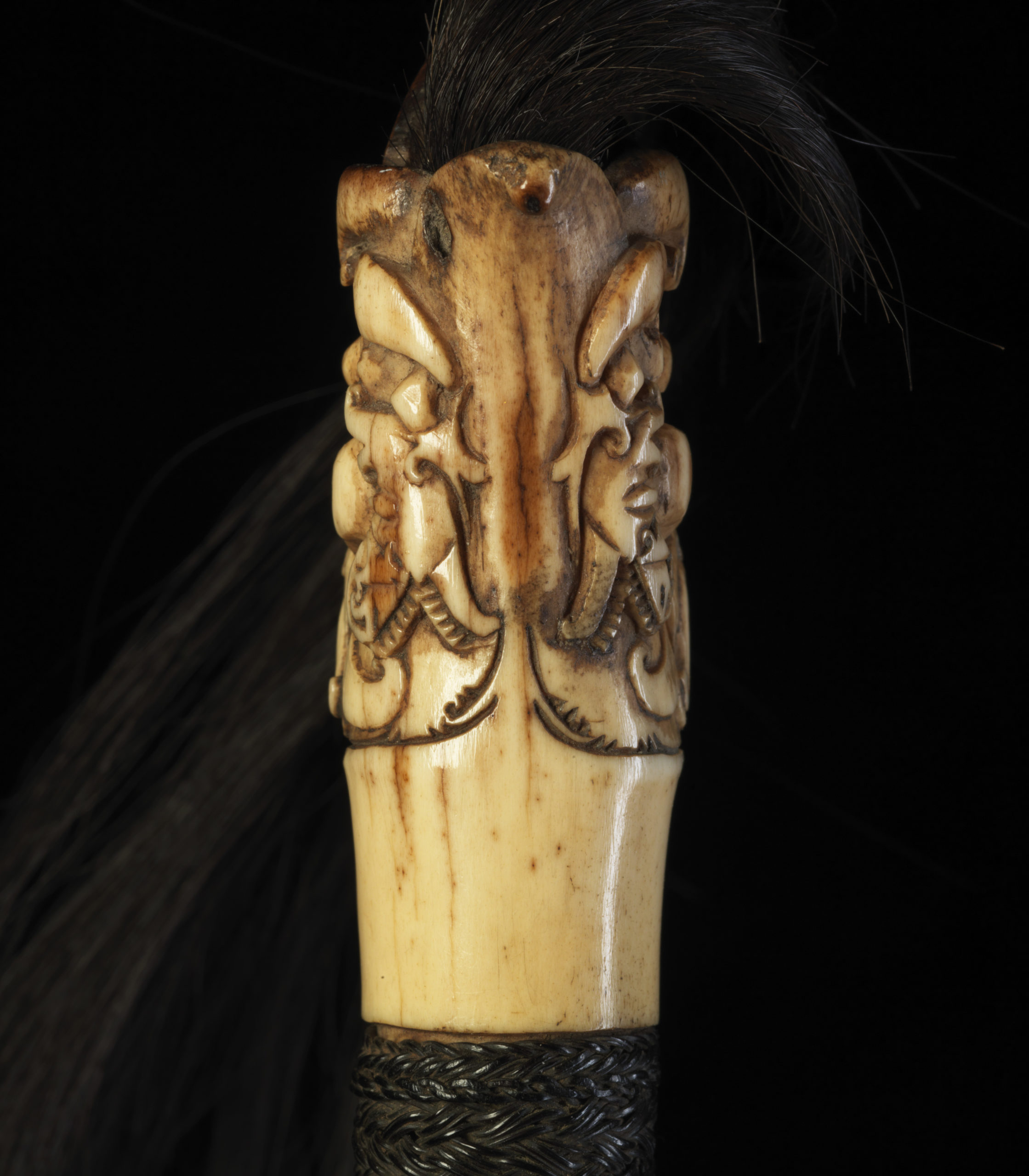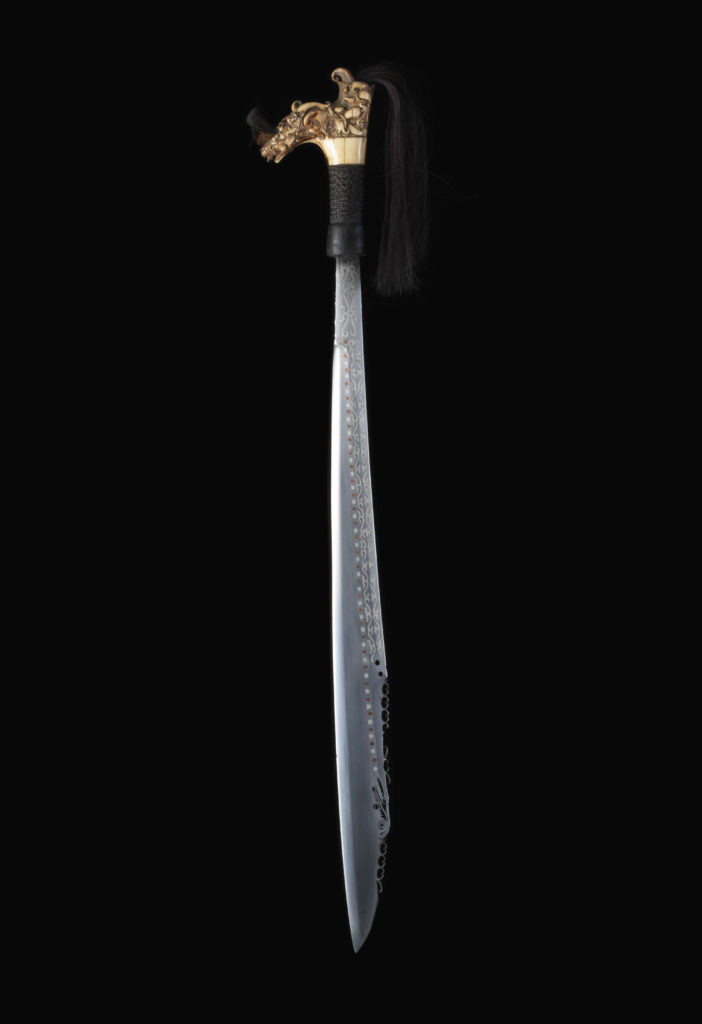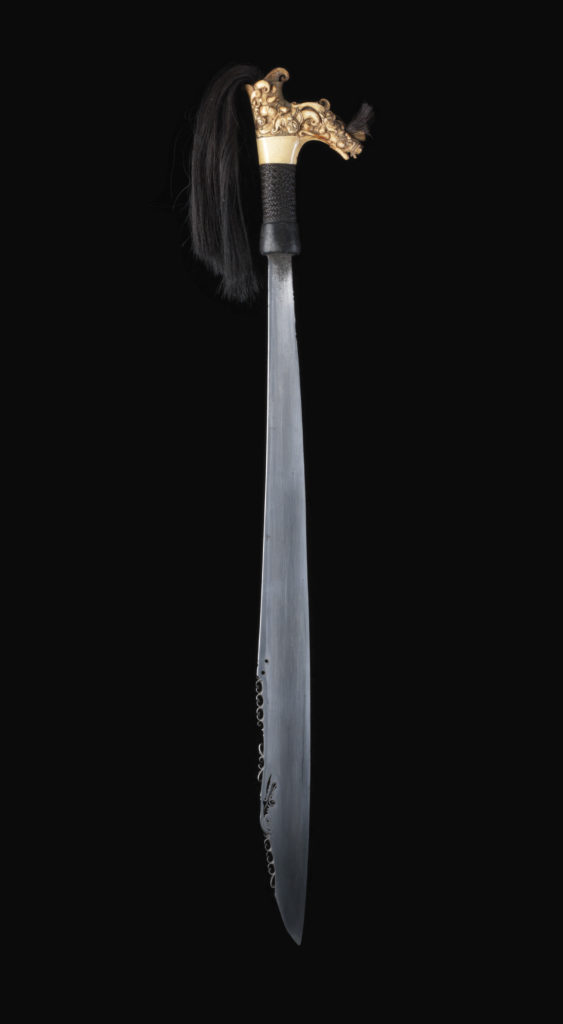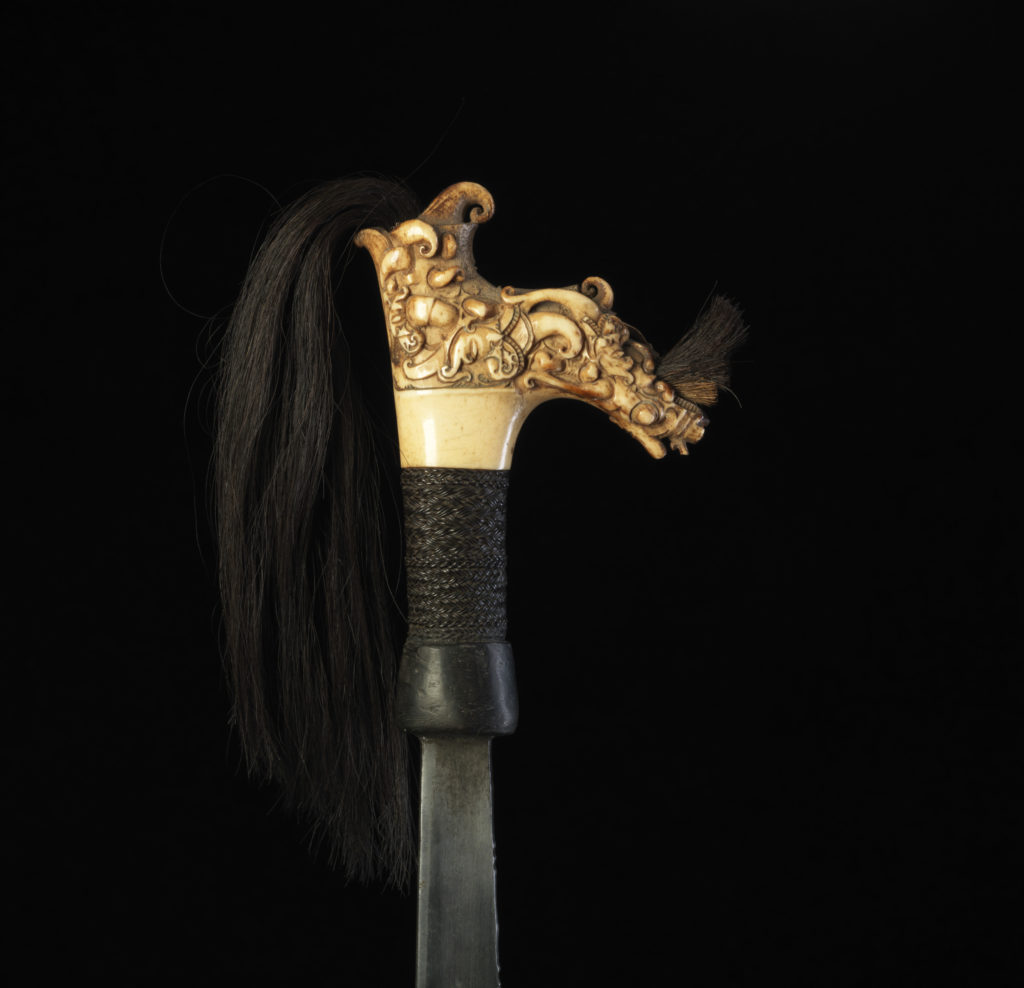Mandau
This mandau can be ascribed to the Bahau-Dayak, the Dayak, named after the Bahau River as the settlement area, who are resident in East Kalimantan (Indonesia, West Kutai regency). Some authors assign swords of this type to the Mendalam Kayan, but this is probably too specific, because blades of this type were negotiated between the groups.
This is a mandau of the highest quality, the blade of which was made by the Longglat or Ma Suling (Bahau-Dayak) in the advanced 19th century (1850 – 1880). The territory of the Longglat is located in the eastern part of the upper Mahakam River. According to Schwaner (1853), the Longglat used to be consistently attributed the best blades. The Longglat and Ma Suling were also the last Dayak to practise smelting their own iron (or steel). The Ma Suling are located east of the kayan. The Apo Kayan and Mendalam areas on the upper Mahakam were, however, all centres of mandau production (after Nieuwenhuis 1907, 267- 272). Therefore, precise attributions are questionable, and the research situation does not allow for a too pointed definition of tribal areas.
The blade has a double-set back and the front part has a fine iron cut in the form of raised and indented spirals and the element li potong, the production of which embodies the highest form of iron cut on mandau. The double hole at the widest point is characteristic of Longglat blades and, as Schwaner (1853) attests, seems to have been a kind of trademark. The blade flank is inlaid with rows of stars and double S-lines (mata kalong) in silver and copper. The inner flank is slightly hollow-scraped, the blade has a slightly curved longitudinal profile. The metal seems to have been industrially produced (English import steel). According to Nieuwenhuis – he proves this by means of comparisons with wall panels and tattoo motifs – the iron-cut ornaments represent gendered motifs, both female and male. The naming of the blades depends on the depth of the ornamentation. Tromp classifies the simple form of the blades according to local informants as leng ook monong, longna (with inlaid decoration), lidjip (with inlaid decoration, breakthroughs and the fine “trunks”, spirals and curls) and li potong, probably the most elaborate form of back decoration, which occurs exclusively on the Longglat and Bahau (Ot Danum) blades.
The handle is made of deer antlers in the typical kayan shape of Ngaju-Dayak. The knob element is dissolved into stylised rows of teeth as a reminiscence of the aso (dragon) and leech motifs, the handle is braided with fine rattan. A tuft of human hair is glued into the top of the pommel. Kohong kalunan or hudoq (face; mask) is a traditional term for the entire handle or design, referring to the group of two, because in the design of the handle there is always – although sometimes invisible – a pairing of aso-dragon and human (head hunter / initiand or also victim of the kajau, as “wandering soul”). Whether the so-called leech motif (lintah) really has this meaning will no longer be easily clarified; it rather seems that it has been preserved and reinterpreted as a basic form from the Zhou and Han form spectrum. The mandau handle as a whole represents the mythical creature aso or earth deity naga pahoda (“horse snake”), the dragon creature that, probably starting from the crocodile as an aquatic ancestral animal, guaranteed agricultural fertility and demanded human sacrifices. On top of it is a stylised or completely dissolved human figure (a cultural hero or ancestor, or initiand), or the sacrifice accepted by the dragon. For this reason, mandau handles are constructed in two parts in the basic layout: the main aso (the dragon, which embodies the Un Underworld) and the anthropomorphic figure arranged on top of it, which embodies the Middleworld and human sphere. The activities of life, especially the rites of passage, are embodied by the suspended spiral, which is almost always present (apart from the highly abstracted variants).
| Object | Mandau, “parang ilang”, “malat” |
| Culture |
Borneo, East Kalimantan or Kutai, Mahakam / Bahau area, Ma Suling or Longglat, Kayan groups |
| Time |
Mid 19th century |
| Dimensions | Length 64 cm |
| Material | Steel, stag horn, rattan, hair, soft metal |








